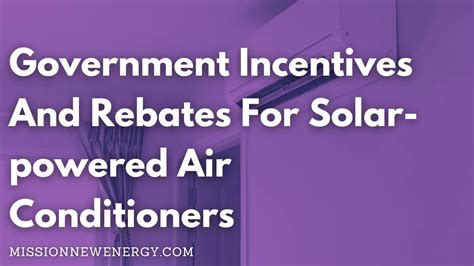Harness the Sun: Discover How Government Rebates Make Solar Energy Affordable
The sun is not just a celestial body that brightens our days; it’s also a powerful source of renewable energy that can significantly reduce our carbon footprint while saving us money on energy bills. As the world shifts towards sustainable practices, solar energy has emerged as a leading solution. However, the initial costs associated with solar panel installation can be a barrier for many homeowners. This is where government rebates come into play, making solar energy an affordable option for everyone.
The Importance of Solar Energy
Solar energy is not only an environmentally friendly option but also a sustainable one. It contributes to reducing greenhouse gases and dependency on fossil fuels. By harnessing sunlight through solar panels, homeowners can generate their own electricity, decrease their utility bills, and even increase property values. As technology advances, solar energy systems are becoming more efficient and accessible, further promoting their adoption.
Understanding Government Rebates
To encourage the transition to renewable energy sources, many governments offer financial incentives such as rebates, tax credits, and grants for solar energy installations. These incentives are designed to offset the upfront costs associated with purchasing and installing solar panels. By providing these rebates, governments aim to foster the growth of the renewable energy sector while making solar energy more accessible to individuals and businesses alike.
Types of Government Rebates Available
Various types of government rebates and incentives are available, depending on your location:
- Federal Tax Credit (ITC): One of the most significant incentives is the federal investment tax credit (ITC), which allows homeowners to deduct a percentage of the cost of solar panel installation from their federal taxes.
- State Incentives: Many states offer additional tax credits or rebates to residents who install solar panels. These can vary significantly, so it’s crucial to check local programs.
- Local Utility Rebates: Some utility companies have their own rebate programs to encourage the use of renewable energy. These rebates can further offset installation costs.
- Grants and Loans: Certain governments and non-profit organizations may offer grants or low-interest loans for solar energy projects, making it easier to finance the upfront costs.
How to Take Advantage of Government Rebates
Taking advantage of government rebates requires some research and planning:
- Research Available Incentives: Start by looking for available government rebates and incentives in your state or locale. Websites like the Database of State Incentives for Renewables & Efficiency (DSIRE) can be incredibly helpful.
- Consult with a Solar Provider: Speak to a solar energy provider who can guide you through the available incentives specific to your situation and location.
- Calculate Your Potential Savings: Use online calculators or consult your solar provider to estimate how much you could save through government rebates and how this affects your return on investment.
- Complete Required Documentation: When you install solar panels, ensure you have all necessary paperwork filled out to claim your rebates, including receipts, installation certifications, and tax forms.
Benefits of Going Solar with Government Rebates
Utilizing government rebates to make the switch to solar energy presents several benefits:
- Cost Savings: With rebates, the upfront cost of solar panel installation decreases significantly, allowing more homeowners to afford renewable energy.
- Energy Independence: By generating your own electricity, you become less reliant on the grid, leading to long-term savings and security against rising energy prices.
- Environmental Impact: Switching to solar power helps reduce greenhouse gas emissions, contributing to a healthier planet.
- Increased Home Value: Numerous studies suggest that homes equipped with solar energy systems have higher property values than those without.
Conclusion
Solar energy is not just a passing trend but a solution for a sustainable future. Government rebates serve as a gateway for homeowners looking to harness this infinite resource while making it financially feasible. By understanding the types of incentives available and how to utilize them effectively, you can take a significant step towards energy independence and environmental responsibility. The transition to solar energy is a worthwhile investment that promises long-term savings and contributes to a greener planet.
FAQs
- 1. What are the eligibility requirements for government rebates on solar energy?
- The eligibility requirements for government rebates vary by location and type of incentive. Generally, homeowners must have a solar panel system installed by a certified provider and fill out the required documentation.
- 2. How much can I save with government rebates?
- The amount you can save depends on various factors, including your location, the size of your solar system, and the specific government rebates available. The federal ITC allows you to deduct 26% of the cost of your solar system from your federal taxes.
- 3. Are there financing options available for solar installations?
- Yes, many solar providers offer financing options, including loans and leasing programs, making it easier for homeowners to afford solar panel installations without a large upfront payment.
- 4. Can I still get rebates if I already purchased solar panels?
- In many cases, you can still benefit from rebates even if you’ve already purchased solar panels, provided you meet the eligibility criteria and apply for them within the specified time frame.
- 5. How long does it take to see a return on investment from solar energy?
- The return on investment (ROI) can vary widely based on factors such as your energy usage, state incentives, and local electricity rates. On average, homeowners may see ROI within 5 to 10 years.
Download Government Rebates For Solar Energy
